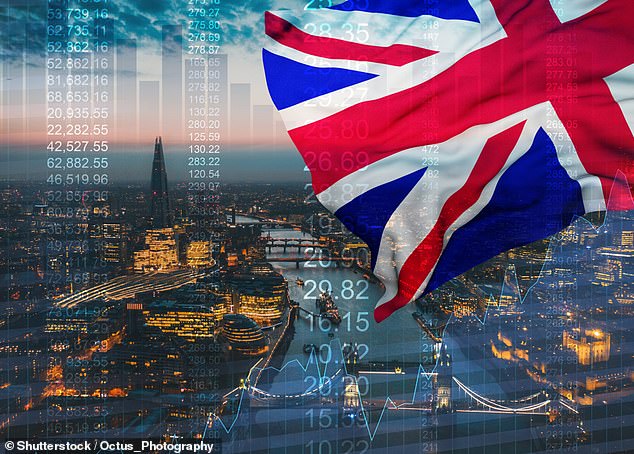The year is off to a mediocre start for shares, and in London, unlike New York, there was not much of a Santa rally.
Big tech America is particularly hard hit, with the biggest enterprise of all, Apple, now worth $2.85 trillion (£2.25 trillion), down from $3 trillion three weeks ago.
But here, the FTSE 100 index shuffles sideways, as it has done for much of this century, unloved by British institutional investors and reliant on foreign buyers to prop it up. So another year of lacklustre performance?
Well, my own target is the Footsie will reach a new high of 8,500, as the value it offers will increasingly be recognised. Supposing that proves premature, remember the power of the dividend. Even if capital values were to move sideways, it offers a dividend yield of close to 4 per cent, more than double that of the S&P 500.
Indeed, if you factor in dividends, the long-term performance of London-quoted companies looks much closer to that of New York-quoted ones. This is a point made by Merryn Somerset Webb, ex-editor-in-chief of MoneyWeek, now writing for Bloomberg.

Backing Britain: The corporate sector can ride out any resurgence in inflation – it knows how to cope – that means it can go on paying dividends
The Footsie reached the age of 40 last week, and according to the investment company AJ Bell it delivered an annualised return over that period of 5.2 per cent.
That lags the 9.1 per cent from the S&P 500 and 7.8 per cent on European shares, as measured by the MSCI Europe (ex-UK) index.
But if you add in reinvested dividends the gaps narrow. The UK is 8.6 per cent, Europe 8.7 per cent and the US 11.4 per cent. That is over the full 40 years, with strong performance in the 16 years from 1984 on, under the Thatcher and Major governments, and the early years of the Blair/Brown one.
However, if you look at what has happened in the 24 years since 2000 the picture is less good. Even adding in dividends the UK does worse than Europe and a lot worse than the US. The decent overall performance by the UK stems from a great run prior to 2000, offset by a poor one thereafter.
There are many reasons for that, including the relentless disinvestment in UK equities by British pension funds and the downgrading of the banking sector. There were the catastrophes at Royal Bank of Scotland and Bank of Scotland, the unfashionable status of mining and oil giants, the small size of the high-tech sector, and negative commentaries about the UK economy. That last point should not matter, as Footsie companies earn three-quarters of their revenue from the world economy, but I suspect in practice it does.
As a result, UK shares offer exceptional value, as the price/earnings ratio of the Footsie – at just over 11 – is close to the bottom of its long-term range.
Will the negative factors continue? Some will, for I can’t see UK banking becoming fashionable again for a while. But one negative cannot persist. UK institutional investors cannot go on reducing their holdings of equities. They haven’t got enough left to sell.
They may not build their holdings, despite being urged to do so, but the fact they are now a neutral force, rather than an adverse one, is some sort of turning point.
In any case, over any long period much of the return comes from reinvested dividends rather than capital growth.
There are two famous long-range reports on investment that come out each year, both going back to the start of the last century. One is the Equity-Gilt Study run by Barclays, the other the Credit Suisse Global Investment Returns Yearbook, which I assume will continue under UBS. Both show that two-thirds of the return comes from compound growth of reinvested income. That applies to bonds as well as equities, but in the case of non-index linked bonds, you have no protection against inflation.
In equities the protection is not perfect because, as we have seen, a surge in inflation can destroy an otherwise viable business. But the rise in general price levels pulls up the value of well-run companies along with everything else.
That gives a further twist to the ‘power of the dividend’ story. We don’t know what will happen to inflation in the medium-term. It will continue to plunge this year, but we don’t know if it will settle around 2 per cent, 3 per cent, or – perish the thought – 4 per cent.
So we don’t know where bond yields will settle. What we do know, with reasonable confidence, is that the corporate sector can ride out any resurgence in inflation. It knows how to cope. That means it can go on paying dividends. And if you want dividends the best place to get those is the UK.
Some links in this article may be affiliate links. If you click on them we may earn a small commission. That helps us fund This Is Money, and keep it free to use. We do not write articles to promote products. We do not allow any commercial relationship to affect our editorial independence.



